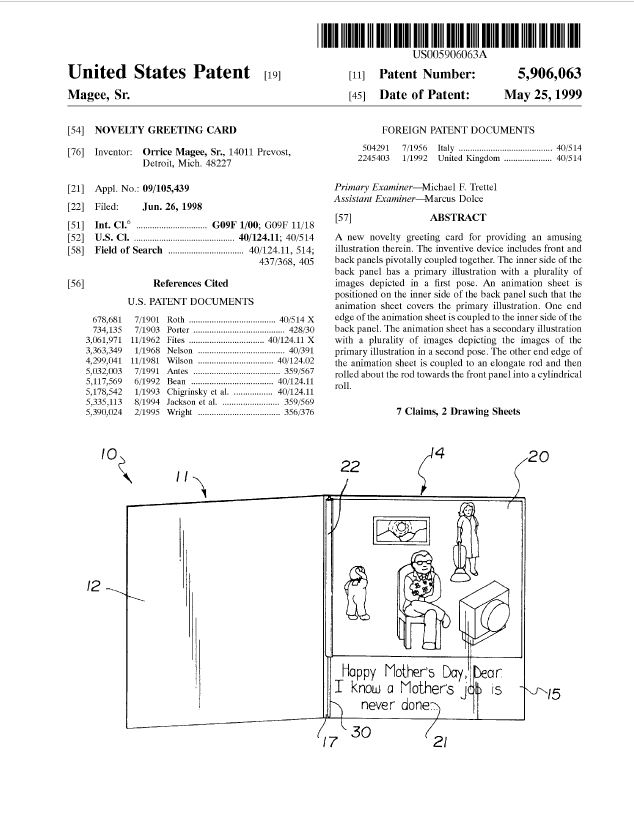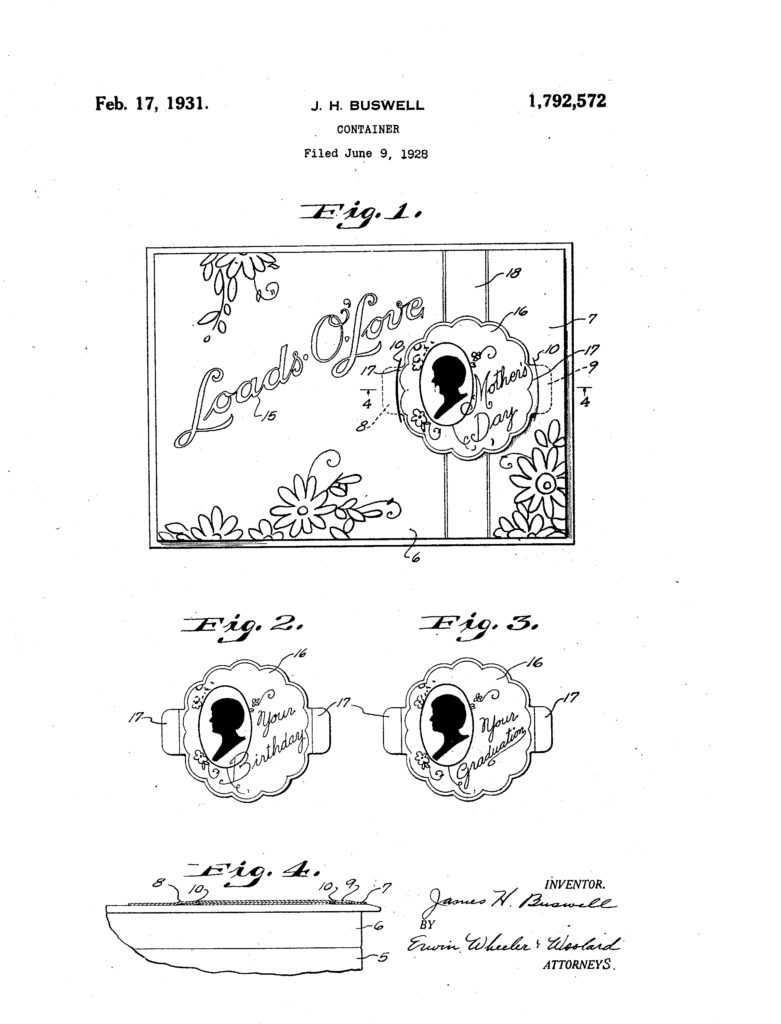The inventor of new technology has two choices
for protection: patents or trade secrets.
They are generally mutually exclusive, because the disclosure
requirements to obtain a valid patent, or inconsistent with the secrecy needed
to have a protectable trade secret. For
most inventions, the choice is easy. Because
trade secrets only last while the invention is secret, they are not good
protection for inventions that are revealed to the public when the invention is
commercialized. However, for inventions that
are not disclosed by commercialization — typically inventions related to the
manufacture of the product like recipes, manufacturing processes, and
manufacturing equipment – trade secret protection may be a reasonable choice. It is hard to detect infringement of a patent
these types of patents inventions, so keeping the inventions out of the hands
of competitors by keeping them secret may offer the best protection.
However, trade secrets have a critical weakness – the loss of secrecy destroys them. Thus while trade secrets have a potentially infinite life, their life can also be disappointingly brief if the secrecy is lost or if the it is independently developed. But independent creation has another possible consequence – the second inventor might decide to patent the invention, and enforce it against the first inventor who decided to keep it a trade secret.
The first inventor could be vulnerable, as its activities may not constitute “prior art” that can be used to challenge the second inventor’s patent. However the AIA created a prior user defense in 35 USC 273, which was tailor-made for this circumstance. The defense applies to a patent on a process, or a machine, manufacture, or composition of matter used in manufacturing or other commercial process. The defense requires that the prior user, (1) acting in good faith, (2) commercially used in the invention, (3) in the United States, (4) either in connection with an internal commercial use or a sale or transfer, (5) at least one year before the earlier of the patent filing date or first public disclosure.
The first inventor has the burden of proof, and thus should keep records sufficient to be able to established the defense. The defense is also personal, and can only be asserted by the person who performed or directed the performance of the commercial use, or by an entity that controls, is controlled by, or is under common control with such person. The defense can be transferred, but only ancillary and subordinate part of a good-faith assignment or transfer for other reasons of the entire enterprise or line of business to which the defense relates. Moreover, when transferred, the defense is limited to the uses at sides where the invention was used before the later of the effective filing date of the claimed invention or the date of the assignment or transfer of such enterprise or line of business.
Of course asserting the prior user defense takes fortitude, be it is basically conceding infringement, and depending on the circumstances, willful infringement if the defense does not succeed. Further, there are a number of limitations that make the prior use defense unreliable:
- It only applies to patents issued on applications filed after September 16, 2011, and does not apply to patents on inventions made, owned or subject to an obligation of assignment to either an institution of higher education or a technology transfer organization (35 USC 273(e)(5)). It must be proven by clear and convincing evidence. 35 USC 273(b).
- The prior use must be continuous. 35 USC 273(e)(4).
- The case will be deemed exception for purposes of an award of attorneys’ fees if the defense is asserted without a reasonable basis. 35 USC 273(f).
- The defense is not a general license, but is limited to the prior commercial use, and improvements not covered by the claims. 35 USC 273(e)(3). The defense does not invalidate the patent. 35 USC 273(g).
- The defense does not invalidate the patent. 35 USC 273(g).
For these reasons, a prior inventor who decides to rely on trade secret protection for an invention may wish to set up a invalidity defense should a second inventor come along and get a patent. The first inventor might do so by making a public disclosure of just enough information to make the invention unpatentable without revealing the trade secret itself. This disclosure might prevent a third party patent from issuing, or if it did issue, could be used to invalidate it. Such a strategy is fraught with uncertainty in striking the balance of invalidating subsequent patents while not disclosing enough to destroy the trade secret.
Another strategy might be to leverage the Supreme Court decision in Helsinn Healthcare S.A. v. Teva Pharmaceuticals USA Inc., and arrange for a non-disclosing sale of the invention. Since it should not make a difference who is the buyer and who is the seller, the first inventor could contract to buy the invention from a vendor bound by a confidentiality agreement. Should a patent issue to a third party, this non-disclosing sale would be prior art as long as it occurred before the third party filed its patent application. (Note that none of the exceptions in 102(b) appear to apply to a non-disclosing sale.).
It’s amusing to contemplate even more devious ways to hide prior art in plain sight, maintaining relative confidentiality while setting up a prior art road block to third party patents. Although such gamesmanship may not guarantee the desired result. For example, in In re Wyer, 655 F.2d 221 (C.C.P.A. 1981), a patent application was filed with the Australian Patent Office, resulting in the publication of a printed abstract of the application, and microfilm copies being retained by the Australian Patent Office, available for the public to view and copy. As a result, the application was found to be a prior art printed publication by the Federal Circuit’s predecessor, the CCPA.
In In re Hall, 781 F.2d 897 (Fed. Cir. 1986), a dissertation was submitted to the Department of Chemistry and Pharmacy at Freiburg University in Germany, indexed in a special dissertations catalog which was part of the general users’ catalog, and stored in the stacks in a special dissertation section. As a result, the dissertation was found to be a prior art printed publication by the Federal Circuit.
In Mazzari v. Rogan, 323 F.3d 1000 (Fed. Cir. 2003) , a report was indexed, cataloged, and available to the public at the Ontario Power Generation Resource Center. Another report was written in German, but also available at a library. The court simply held, with respect to the German reference, that a publication printed in a foreign country can act as a statutory bar. As a result, the report was found to be a prior art printed publication by the Federal Circuit.
In re Klopfenstein, 380 F.3d 1345 (Fed. Cir. 2004), a fourteen-slide presentation was printed and pasted onto poster boards and displayed continuously for two and a half days at an American Association of Cereal Chemists meeting, and then put on display for less than a day at an Agriculture Experiment Station at Kansas State University. As a result, the presentation was found to be a prior art printed publication by the Federal Circuit.
Finally, in Bruckelmyer v. Ground Heaters, Inc., 445 F.3d 1374 (Fed. Cir. 2006), a Canadian patent application included two figures that were cancelled during prosecution and not included in the patent that issued from the application. The application, including the two cancelled drawings, was found to be a prior art printed publication by the Federal Circuit.
Conclusion
Deciding to treat an invention, particularly one relating to the manufacture of a product, as a trade secret, rather than patenting it, is often a good decision. This is particularly true, if infringements would be hard to detect. However, the inventor should consider the ability to keep the invention secret, and the likelihood that a third party might subsequently make the same invention. The inventor should also consider the likelihood that the third party might obtain a patent, and if the prior user defense should fail, what the inventor can do to be prepared to invalidate that patent.


